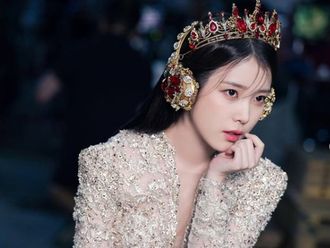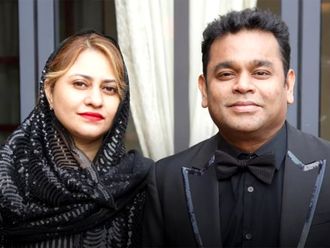
Yves Saint Laurent, France’s shy genius of fashion, came to the big screen at Cannes on Saturday with a biopic delving into the darker side of the celebrated designer and his struggles with depression, drink and drugs.
The high priest of fashion who pioneered tuxedos for women and ready-to-wear is shown cruising for sex, taking cocaine and pills and indulging in casual cruelty to women in Bertrand Bonello’s film Saint Laurent.
The Yves Saint Laurent that emerges is far darker than the character presented by a rival biopic released earlier this year that won the support of Saint Laurent’s romantic and business partner Pierre Berge.
Producer Eric Altmayer said the news that director Jalil Lespert was also making a movie about the designer had come as a surprise.
Unlike their film, Lespert’s received the “firm support” of Berge who repeatedly and publicly demonstrated his approval.
Liberating effect
But he said the emergence of a second film ultimately had a liberating effect on the production, allowing them to avoid the usual constraints of the traditional biopic.
“We had access to absolutely nothing, not even a shirt,” he told reporters.
“We rented these costumes from a collector, all the dresses you see... had to be recreated. We built a studio with all the seamstresses... it was a tremendous investment in terms of time and effort,” he said.
Saint Laurent, who died aged 71 in 2008, is regarded as one of the most influential designers in fashion history.
His creations such as the trapeze dress and the female tuxedo or Le Smoking became instant classics and largely shaped the way women dress today, according to fashion historians.
French actor Gaspard Ulliel donned Saint Laurent’s trademark horn-rimmed glasses and bouffant, helmet-like hairstyle for the film which starts at the height of the designer’s depression in 1974.
Born depressed
“Yves was born a depressive almost. He had suffered from depression from adolescence at least,” Ulliel said in production notes.
“His homosexuality also exposed him to mockery and hasty judgements, as did his fragility and slenderness. Part of his success undoubtedly comes from taking revenge on the hand life had dealt him,” he added.
Bonello’s non-linear film, largely concentrating on a few episodes between 1967 and 1976, vividly conjures up the hedonistic pre-AIDS days of the early 1970s.
There are gay sex parties and drinking and drug-taking in nightclubs with muses Betty Catroux and Loulou de la Falaise played by newcomer Aymeline Valade and Blue is the Warmest Colour star Lea Seydoux respectively.
Bonello said he did not set out to make a traditional biopic that showed how “Saint Laurent became Saint Laurent”.
Instead, he said, he tried to show “what it costs him to be Saint Laurent... having to deliver four collections a year, being a star”, he added in the notes.
Critics’ take
Critics were largely unimpressed, albeit more complimentary than they were about its “bland” rival.
“[The film] while seductively silly and largely unmoving, does a better job than its predecessor of celebrating Saint Laurent’s flamboyant artistry,” said entertainment magazine Variety.
“Bonello’s sexier number must gamble on sustained audience interest in a chilly figure whose life — notwithstanding the drugs, desires and debauchery that go with the high-fashion terrain — wasn’t extraordinarily dramatic.”
The Hollywood Reporter said the screenplay rarely managed to “get inside the head of the self-destructive character the designer had become by the 1970s”.
The film was 47 minutes longer than its rival “though to no apparent benefit,” it added.
Saint Laurent is one of 18 films in competition for the top Palme d’Or prize at the Cannes Film Festival.












